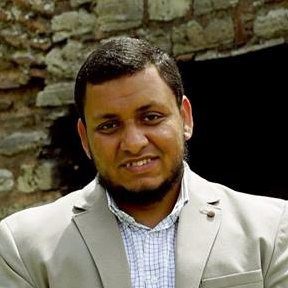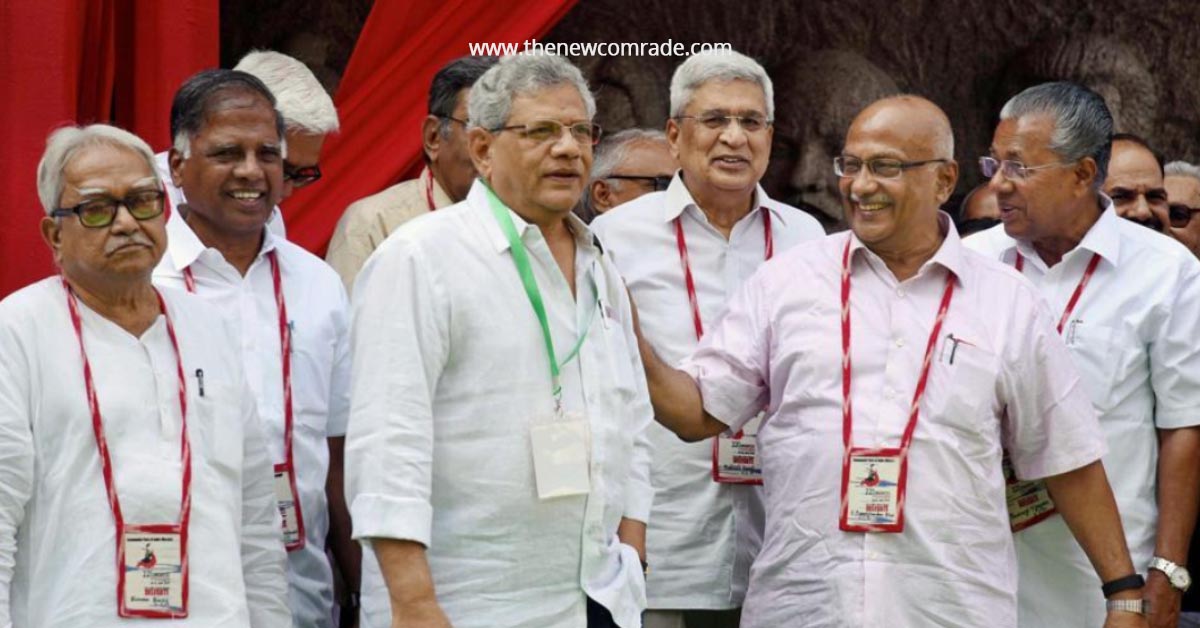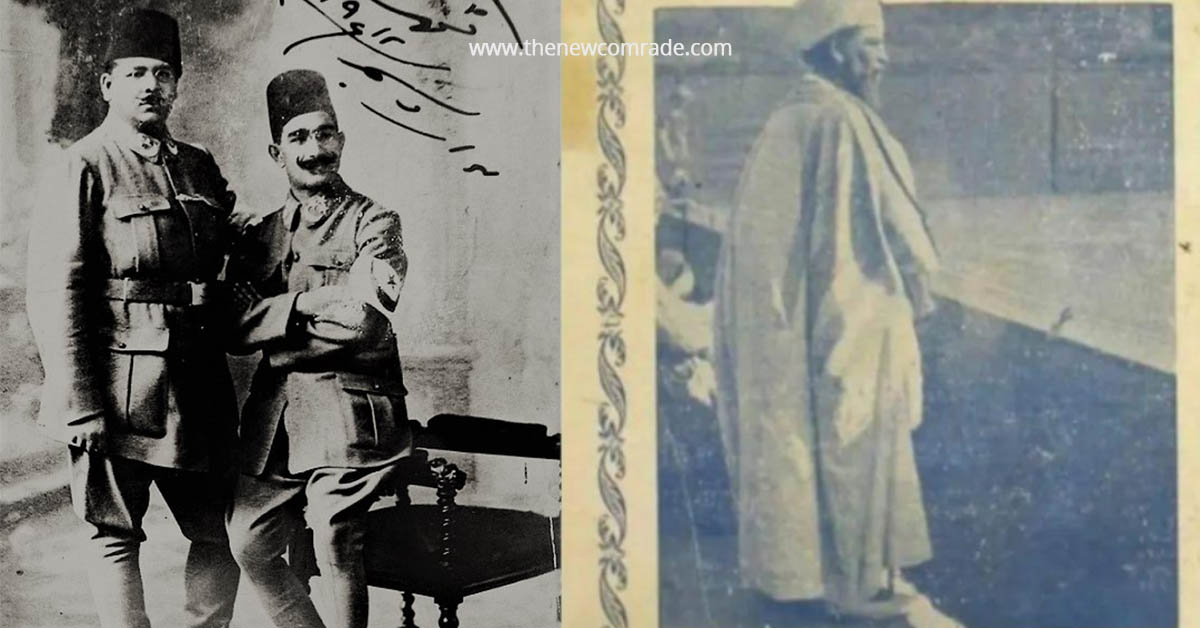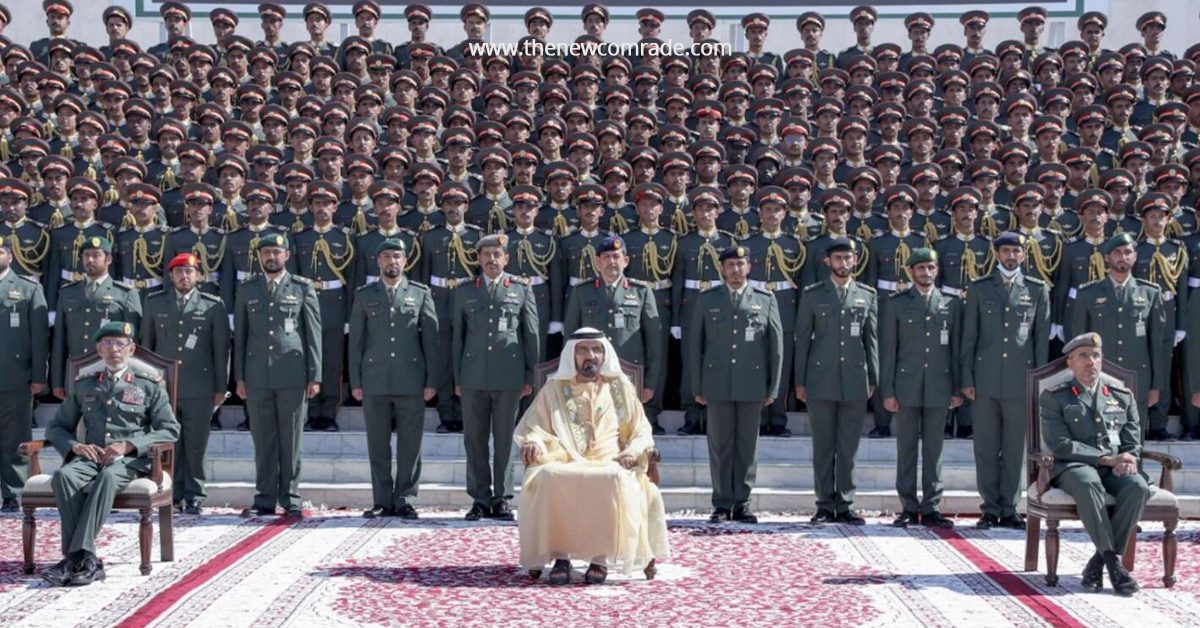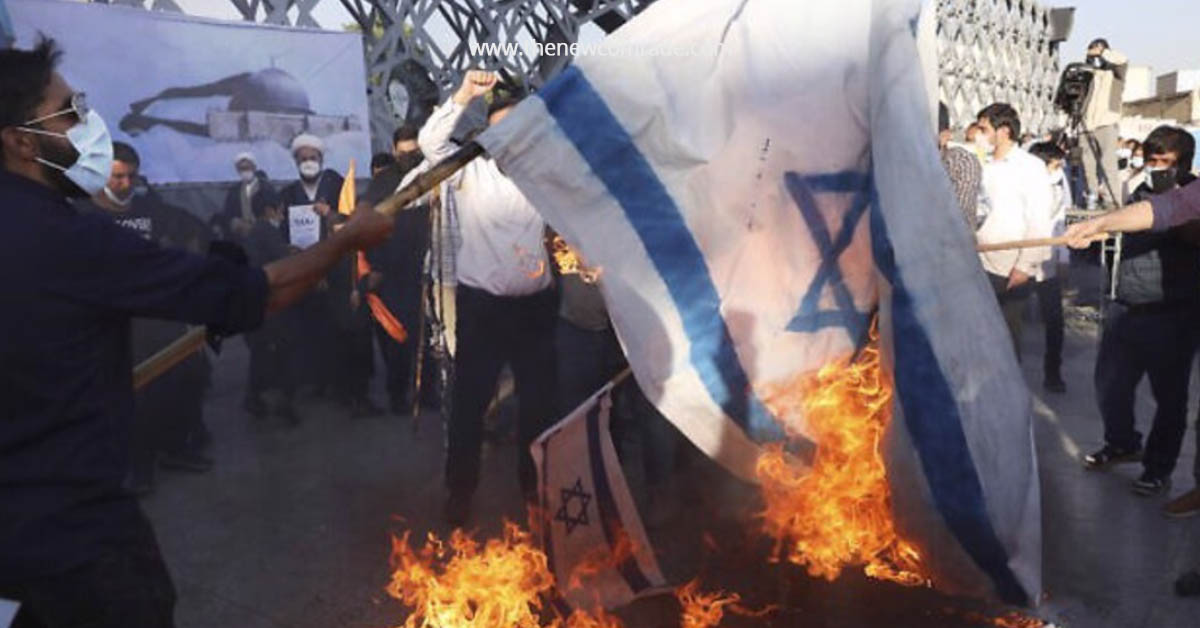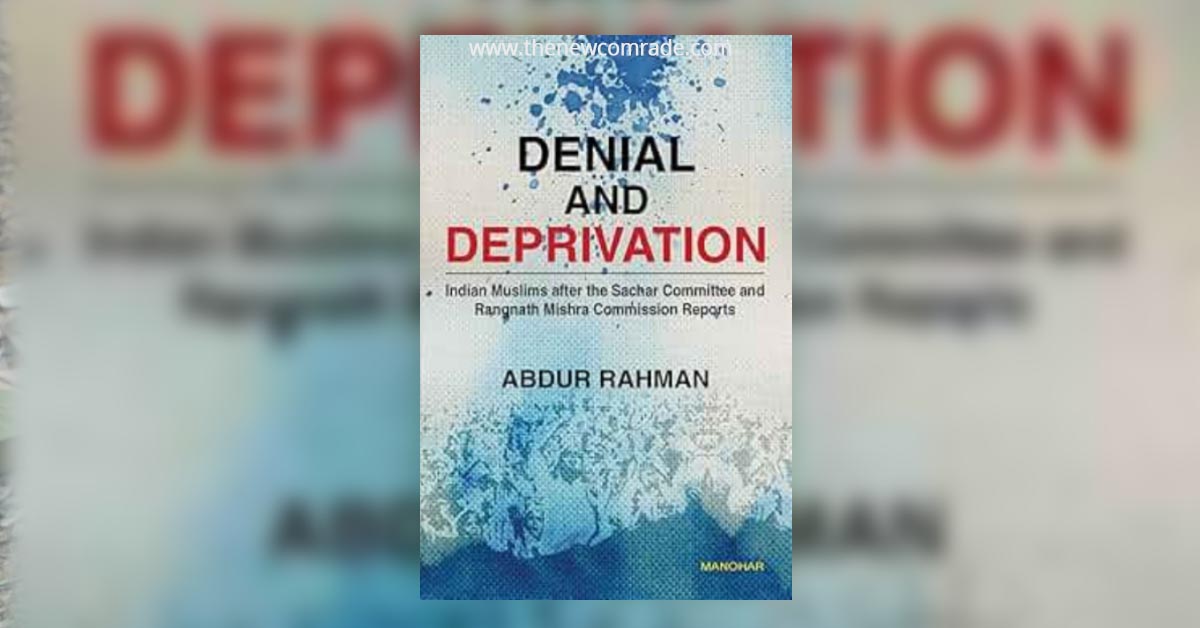Read the previous part here
Creation of the Zionist entity (“Israel”) is one of the most important stories that ought to be studied by Muslim political ventures, any body seeking political changes, adherents of different political streams, religious activists, etc.. It is an instance of a remarkable success in establishing a state from nothing – not a conventional state, but one upon whose existence or extinction the destiny of current world order is tied up with. In his book, “Strategy of Colonialism and Liberation”, Dr. Jamal Hamdan says: “In it lies the essence of the global clash of civilisations.”
This story begins with Theodore Herzl publishing his book, “The Jewish State” in 1896 CE at an age of thirty-nine years. He was a person endowed with an admirable degree of patience, determination, and intelligence, though we may hate his historical role. He was able to sell to the West a solution to the chronic “Jewish problem” in form of creating for them a sophisticated Western colonial base somewhere in the East. During the following year, Herzl rendered the ideas in his book into an action programme that he presented in the First Zionist Congress held in Basel, Switzerland. In that Congress, he discussed issues related to politics, financing, and human resources of the Zionist project.

Despite failure of his overtures with the Ottoman Sultanate and the Germans, he continued with his efforts till his early death in 1904 CE, when he was forty-four years old. His legacy was continued by someone no less competent, diligent, and intelligent than him, viz. Chaim Weizmann – a former chemist and the second and most important of all leaders of Zionism.
In 1907 CE, British Prime Minister Henry Campbell-Bannerman declared the necessity of establishing a foreign political entity in the Mediterranean region close to the Suez Canal that would remain loyal to the West. At that moment when he had succeeded in convincing British politicians of the Jewish state project, Weizmann was in Palestine searching for lands that could be purchased. For this purpose he established “Palestine Land Development Company”. Within barely two years, seed of Zionist army was sown in 1909 CE – as watch guards for protection of initial Jewish settlements. Two years later in 1911 CE, Jews raised demand for instating Hebrew as an official language.
Zionist infiltration reached up to the ministerial level in the British government through Hebert Samuel, who could be credited as the real founder of the Zionist state. He was so intelligent and far-sighted that in 1915 CE, he submitted a memorandum to the British government in which he said that the time was not ripe for establishment of a Jewish country in Palestine and that there must be a British occupation there that could prepare apt conditions and pave way for realisation of this project.
By the end of World War 1 Britain occupied Palestine, in 1917 CE. British army entered Jerusalem and in its ranks were the first Jewish militia trained at the hands of the English. Chaim Weizmann, then, visited Jerusalem not as an investor, as he had done until then, but as a leader of a nascent project. This project would not have realised, had it not been for the negligence of Arabs and the naivety and betrayal of their rulers. The British enticed Sharif Faysal to agree to the establishment of a Jewish state in Palestine. Such was the ‘rebel’, who sought British assistance in Arab “independence” from Ottomans and installation of his father as Caliph.
Soon after Zionist movement arrived in Palestine under the auspices of the British occupation, it set up the nucleus of its intelligence apparatus in 1919 CE to collect detailed information and draw maps of the extent of popular acceptance of Zionist project, of empty lands, of demographics, of lands easy to purchase, of regions from where resistance could be expected, etc. As such, Zionists managed to secure a security apparatus as well as a military apparatus. What remained was their political frame.
The British then installed the Zionist Herbert Samuel as “High Commissioner” over Palestine in 1920 CE in order for him to implement what he had proposed before five years, i.e., prepare conditions through the British for establishment of the Jewish state, thus rendering him the true founder of the Zionist state. This is so because, in addition to the influx of Jews through immigration, he armed them and supported them to form an exclusive army, allowed them a separate educational system, approved Hebrew as an official language, seized public domain and government lands and granted these to the Jewish settlers by means of a hundred laws that he enacted to ease draining of lands to the hands of Jews. While Herbert Samuel was establishing Jewish state in Palestine, Chaim Weizmann was busy political activism, with economic and financial support of the Rothschilds. This way, a seamless division of roles was put in place by the British might.
Five years henceforth, i.e. by 1925 CE, number of Jew settlers and their settlements had doubled, with own separate institutions and administrative bodies – autonomy for Tel Aviv, a trade union led by David Ben-Gurion and so on. A grand ceremony marked establishment of a Hebrew University in Jerusalem, attended by the then British Prime Minister Lloyd George, Edmund Allenby (British military governor), Arthur Balfour, Winston Churchill, Chaim Weizmann, and Herbert Samuel.
It should be noted that Zionists basically utilised religious appeals and biblical narratives. This was the case even with the secular Zionists. Tremendous efforts were made to revive and use the then non-existent Hebrew language to prepare it to be official language of the new state. Thus, Zionists maintained a constant channel of support, kept their latent energies burning, and addressed Jewish masses around the world with what would stimulate their potentialities.
In every popular uprising, the British weapons moved brutally to suppress all resistance. Various means and weapons of murder, assassination, arrests, exile, and trials were employed. This was closely supported by intelligence operations. All these were covered up by political activities aimed at inciting divisions among Palestinian leaders and their moves were closely monitored with the aim of aborting their moves.
In 1935 CE, Zionist factories were exporting diamonds and cotton beyond Palestine. It was the same year in which Ezzeddin al-Qassam consulted with Palestinian leaders about inciting a revolution against the British. They responded that people were not ready and that hope remained to attain rights through dialogue and negotiations with the British. However, al-Qassam incited a revolution and fell martyr. In 1936 CE, Palestine witnessed the longest strike (Arab General Strike) in its history – it lasted for six months and it was ended with the intervention of the British client “Arab” rulers of the neighbouring “states” making a promise of accord with the British.
By then, Zionist entity had become practically independent of the British and, de-facto, sovereign. Zionist security apparatus had developed to the extent of having a bugging device installed in the office of al-Haj Amin al-Huseyni – the supreme political leader of the Palestinians. Thus, Palestinian revolutionary movements were exposed to the Zionists and the trailblazing Palestinian revolution was met with various ways of British crackdown. The methods employed were, killing field commanders, cutting off of political leaders from ground realities by forcing them out of Palestine, and disarming people. If even an empty bullet was to be found in one’s house, they would blow up the house. The British army threw its whole weight in quelling the revolution that lasted for three years. For this it dispatched twenty thousand troops under four senior generals who had participated in World War 1.
On the other hand, the Jews were increasing in numbers through immigration, in warfare through British supplies, and in experience through military training. In their efficacy they achieved a level of even setting bogeys of “Islamic” and “nationalistic” organisations that would create discord among the genuine organisations and incite schisms and crises. The security apparatus drew clear picture of members of Muslim organizations in Palestine, as to who among them were easy to deal with, who could be bought with money and whose elimination was inevitable.
During the revolution, Britain constituted a committee to “study the situation”, viz. William Peel Commission. This was its habitual way of cooling down the resistance and buying time to crush revolutionaries. Despite all that the Zionists did by means of immigration and settlement, area of the land they owned did not exceed five percent and was concentrated in north of Palestine. In spite of this, the above-mentioned committee came up with a proposal of dividing Palestine between Arabs and Jews. The northern one-third of Palestine was to be granted to Jews and the southern two-third to Arabs. The interconnecting area between Jerusalem and Haifa was to remain a British colony. This was a new gain for the Jews which they appropriated through the power of British diplomacy, except as was their wont, they did not stop there.
The three years of revolution (1936 – 1939 CE) ended with martyrdom of over five thousand Palestinians and a further fourteen thousand wounded, in addition to those who were arrested, exiled or deported. Thus, the generation that could stand up effectively to the Zionist gangs were eliminated ten years prior to the establishment of their entity. To put in other words, Nakba first occurred with the suppression of Palestinian revolution by 1939 CE.
With the outbreak of World war 2, fifteen thousand Jews joined the ranks of the Allies and acquired experience, training, skills in using weapons and knowledge of the military sciences that the Palestinians had not acquired through any means. It was the time that the Haganah was transformed into a real army possessing a fleet of military aircraft. During that period, in parallel to the military efforts, there were also security and intelligence efforts going on which worked for closing the file of “villages” – clear, detailed information about all Palestinian villages were finalised in terms of : economic conditions of their inhabitants, ease and difficulty in occupying each village, etc.
At the end of World War 2, the situation in Palestine was pathetic at all levels. Internationally, Allies had defeated the Axis powers, upon whom Arab and Palestinian hopes were pinned. This paved the way for the Zionist state project to move forward without any political obstructions. Zionism could quickly read the situation and transferred the whole burden of its activities and reliance from Britain to America (1942 CE).
Internally, Zionism was entrenching its presence on the land to ever-increasing levels. The Hagana gang had already transformed itself into a real army, through military experience, know-how, weapons, and equipment that it acquired through participation in World War 2, alongside Britain. Zionist security apparatus was completing its detailed survey and plan for the Palestinian villages and towns: It was collecting information related to all towns and villages like the type of land, inhabitants, economic situation, political orientations, and extent of ease or difficulty in occupying a particular town or village. Its capabilities were further enhanced through recruitment of agents, surveillance of Palestinian society and what was left out as domains from its influence. It even had “National” and “Islamic” institutions to disrupt the activities of genuine institutions, to incite crises of disunity among them, and alienate people from them.
At the level of the Palestinian people, conditions were dark. They were still suffering from setbacks to the first generation of resistance, whose revolt (so-called Great Palestinian Revolution) occurred 1936 ~ 1939 CE. This revolt had led to a death toll of over 5000 Palestinians and over 14,000 people wounded. This was accompanied by disarming of Palestinians, destruction of their houses, assassination of their leaders, exile of their political leadership cutting them off from ground situations, politically disuniting Arabs and occupation of their lands.
Zionism reiterated its old plan, placing itself in the service of the then global powers to achieve its goals. It shifted centre of its activities from Britain to America in conformance with the shift in the balance of power after World War 2. America was at that time inheriting the British and French colonial presence. Zionism acted as its arm for inheritance of the British from Palestine. As such, a conference of Zionist movement in Atlanta, US, in 1944 CE, demanded departure of the British from Palestine and provision of international protection for Jews. Following this, Zionists ignited a guerilla war against the British army itself and carried out many notable bombings, assassinations and kidnappings to the extent that 169 Britons were killed between 1946 and 1947 CE. Around the end of British mandate for Palestine, Zionist gangs had carried out over 500 operations against the British. It was a captivating spectacle of Churchill, who, in past, provided training to Zionist gangs, now expressing his bitterness, caution and warning at the United Nations. This cautioning, understandably, was a hollow one.
Despite all of this, Britain almost kept itself to total silence and did not respond anything, worth mention, against Zionists, as they were under American protection. Also, many of the personnel of the British police and army stationed at Palestine were Zionists themselves. At the same time, Palestinians were arrested for merely possession of weapons and the number of detainees increased to 300 during the first half of 1946 CE.
Further, Zionists involved themselves in financing Presidential campaign of Harry Truman in the US. He recompensed them after his victory by approval of immigration of one hundred thousand Jews to Palestine. Zionists were also collecting funds from Jews of the US for establishing military industries in Palestine. With this, the Haganah gangs started manufacturing some of their weapons and strengthening their effective position vis-a-vis British who eventually declared their departure from Palestine after two years in 1948 CE.
Thus began the process of Zionist inheritance of Palestine from the British. Zionists bought weapons of the British with money that they would not have had without external support. They had 24 warplanes, which they bought for five million pounds. By the beginning of 1948, Jewish Agency had managed to have effective administrative as well as military control over the Palestinian land. It had a fighting army comprised of Haganah gang with 35,000 fighters, Special units with 10,000 fighters and Irgun and Stern gangs. These gangs worked for implementing the plan for displacement of Palestinians. Their operations varied from military attacks on villages and their displacement, bombing of markets and shops, setting up road ambushes and killing Palestinians, special operations by Mista’arvim units, etc.
In a meeting on March 10, 1948, i.e, two months before end of the British Mandate, Haganah leadership drew up a complete plan for the forced displacement of all Palestinian villages. The plan was based on striking terror rather than using military superiority. Obviously, there would be massacres and terrible strikes that would result in the flight of Palestinians, even before they could make up their mind to engage in any clash or resistance. If some of the Palestinians were captured as prisoners, some of them would be killed before transferring the others to central detention centres, so as to realise the goal of terrorising and paralysing of any attempts to resist. Any besieged village would be surrounded from three sides and heavily bombed so that people will be forced to flee through the fourth side. This plan of forced displacement started from the Mediterranean coast and extended towards east, so that the coastal stretch of this nascent rogue state is strategically well-maintained. The first people to be displaced were the inhabitants of the northern and western villages and towns. Their numbers is estimated to be three hundred and fifty thousand Palestinians.
Palestinians displayed a valiant resistance. However, it was disorganised and scattered and was afflicted by a huge parity of strength and armament and weakness of its cadre resulting from suppression of the first generation of their revolution, some ten years prior. It also suffered from the global complicity, especially of the British, in the Zionist atrocities as well as the treachery of the Arab leaders whose capitals were ruled by the agents of Zionists and imperialists who helped in killing and exterminating Palestinians. This scenario is succinctly presented in the message of Abdelqader al-Huseyni to the Arab League: “I hold you responsible for leaving my soldiers without help or weapons when they were at the height of their victories.” He was martyred three days after his message, on April 9, 1948 CE. While people were preparing for his funeral, the village of Deir Yassin was subjected to the famous massacre by Zionists.

On May 14, 1948, the British ruler left Palestine and Ben-Gurion arrived there. He declared “independence” of the state of Israel with a large picture of the founding theorist of Zionism, Theodore Herzl placed behind him, who had sown the seeds of what was then realised, only to die eight years later and have his dreams realised forty years after his death. From here began a new stage in the history of Palestine, Arabs, Muslims, rather the whole world.
At this time, Britain gave permission for the Arab forces to enter Palestine, meagre in numbers as well as arms. The total strength of seven Arab armies was not more than twenty four thousand, which was not even one-third of the Zionist military strength. Further, Arab armies had entered with the slogan of “Liberation of Palestine” merely to officially mark their entry onto the other side, as a farce. In addition to the weakness in terms of numbers, equipment and experience, they were subject to the directions of regimes who themselves were subject to the occupation and were under the leadership of the British (for instance, Englishman Glubb “Pasha” , was commander of the Jordanian Army, with English assistants). These were armies, who either did not fight, or else, would enter villages to disarm the population there and retreat in battles with Zionists, thus leaving villages without any weapons to fight – following which, Zionists would carry out massacre, fuel terror and panic and produce a new wave of flight. Zionists carried out massacres in Lydda and Ramla in presence of Arab armies and their inaction. Moreover, Arab regimes intervened to stop and end everything that the volunteer mujahedin were able to accomplish, either by issuing withdrawal orders, changing their plans, halting their progress, or even imprisoning them.
Thus, Palestine fell.
The share of Arab agents in its downfall was no less than that of the Zionists or occupiers. If Herzl originated the idea and sowed its seeds, we must not forget the efforts of those who followed him, especially this dangerous trio: Chaim Weizmann, Herbert Samuel, and David Ben-Gurion. These three worked to adapt all international and domestic circumstances to serve creation of the Zionist state. Simultaneously, they worked to ensure that their entity would not be completely linked to the Western political disposition. Rather, they established own military, economic, and security independence, so that with their own strength they would be a party to the political equation. Under the pretence of their nationalistic and religious exhortation to Jews, they worked to create favourable conditions for the state before its establishment or declaration. When the moment of declaration came, Israel was a fait accompli!
Although these people deserve to have their names placed in the register of honour of the Zionists, we must never forget that there are others who deserve to have their names placed in the register of ignominy in the records of Arabs and Muslims!
Translated by Thafazul Ijyas

